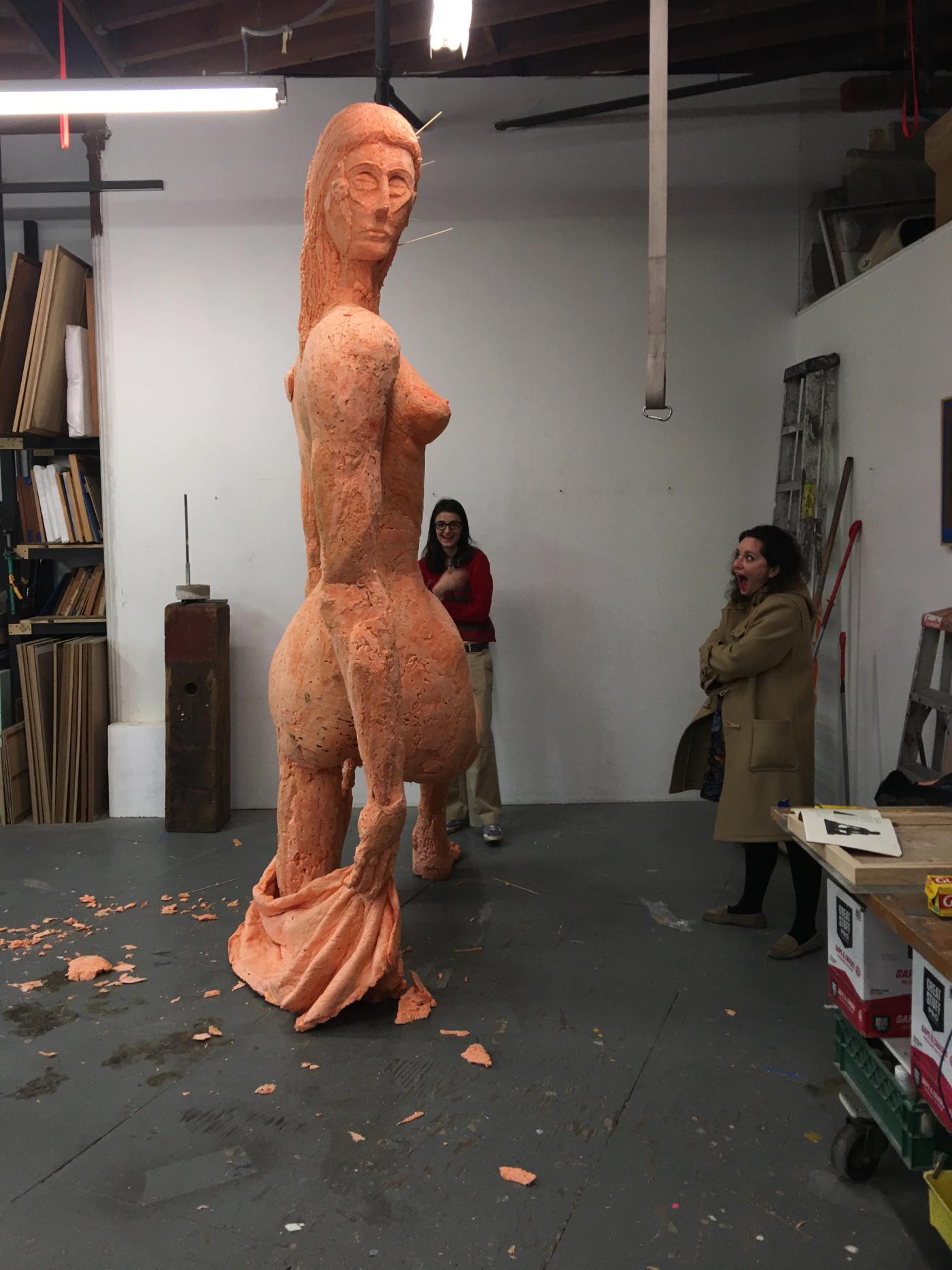
- Press:
- Cultured Magazine
56 HENRY is pleased to present The Spirit of the Dance, an exhibition by Ohad Meromi on view from February 2 through March 12, 2023.
How should a monument be? In his first solo show at 56 Henry, Ohad Meromi asks this question by presenting a gargantuan sculpture of a naked figure, rough-hewn but graceful, which towers over the space of the gallery. Loosely based on the 1932 William Zorach sculpture “Spirit of the Dance,” Meromi’s figure, made of orange Polyurethane foam and bearing both breasts and a penis, positions itself as a sculpture in the process of becoming. For Meromi, the monument, with its potential connotations of oppression, triumphalism, and force, is recreated here in the gentler form of a proposal: a model for a freer, better world. With its malleable materiality, imprinted by the artist’s hand, Meromi’s sculpture celebrates the ability to rethink the possibilities of the body in the context of art, and offers the exhibition space as a site that presents a hint of a utopian horizon.
In a framed poster on the gallery wall, Meromi, in the guise of the invented entity the Subcommittee for American Monuments, extends this point. Calling to overwrite rather than erase the monuments that are tainted by the ugliness of the past’s prejudices, he suggests we reimagine the sculptures that have commemorated historical wrongs by flanking them with new figures. This playful worldmaking finds a place, too, in Meromi’s preoccupation with craft and its immediacy. The small sculptures and wall-based works that are displayed in the gallery space offer a moment of humanistic tactility for a deadening, too-sleek world. A scrap of yellow and black fabric woven by Meromi on a loom he built is appended to one wall piece; the contours of a plaster Pushkin on a horse are delineated expressively with a paintbrush dipped in blue; a small metal head, its elements soldered together bluntly, stands like a found archeological artifact on a wooden pedestal.
The visual vocabulary that Meromi employs in his work, with its shades of Soviet Constructivism, evokes a longing for the aesthetics of socialism and its remnants in the welfare state. Midcentury public sculpture was able to remind its observers of the state’s role as something of a caretaker for its subjects. One was not alone in the world, these sculptures seemed to say: there was also something bigger. Meromi’s work, no matter its stature, is meant to echo that feeling. The belief that aesthetics are indissolubly linked to politics, and that the acts of art-making and art-viewing have significance, even just within the space of the studio, the home, the gallery, is an optimistic thing. In a world full of doubt, Meromi creates a space for imagination and, even, hope.
-Naomi Fry
Ohad Meromi was born in 1967 in Kibbutz Mizra, Israel, and lives and works in New York. He graduated from Bezalel Academy of Art and went on to receive his MFA from Columbia University School of the Arts. He has exhibited at venues and events including The Israel Museum, Jerusalem; The Tel Aviv Museum of Art; The 2nd Moscow Biennale of Contemporary Art; The Lyon Biennial, France; Martin Gropius Bau, Berlin; Magasin 3, Stockholm; De Appel Museum, Amsterdam; Sculpture Center, New York; MoMa PS1, New York; and Art in General, New York.